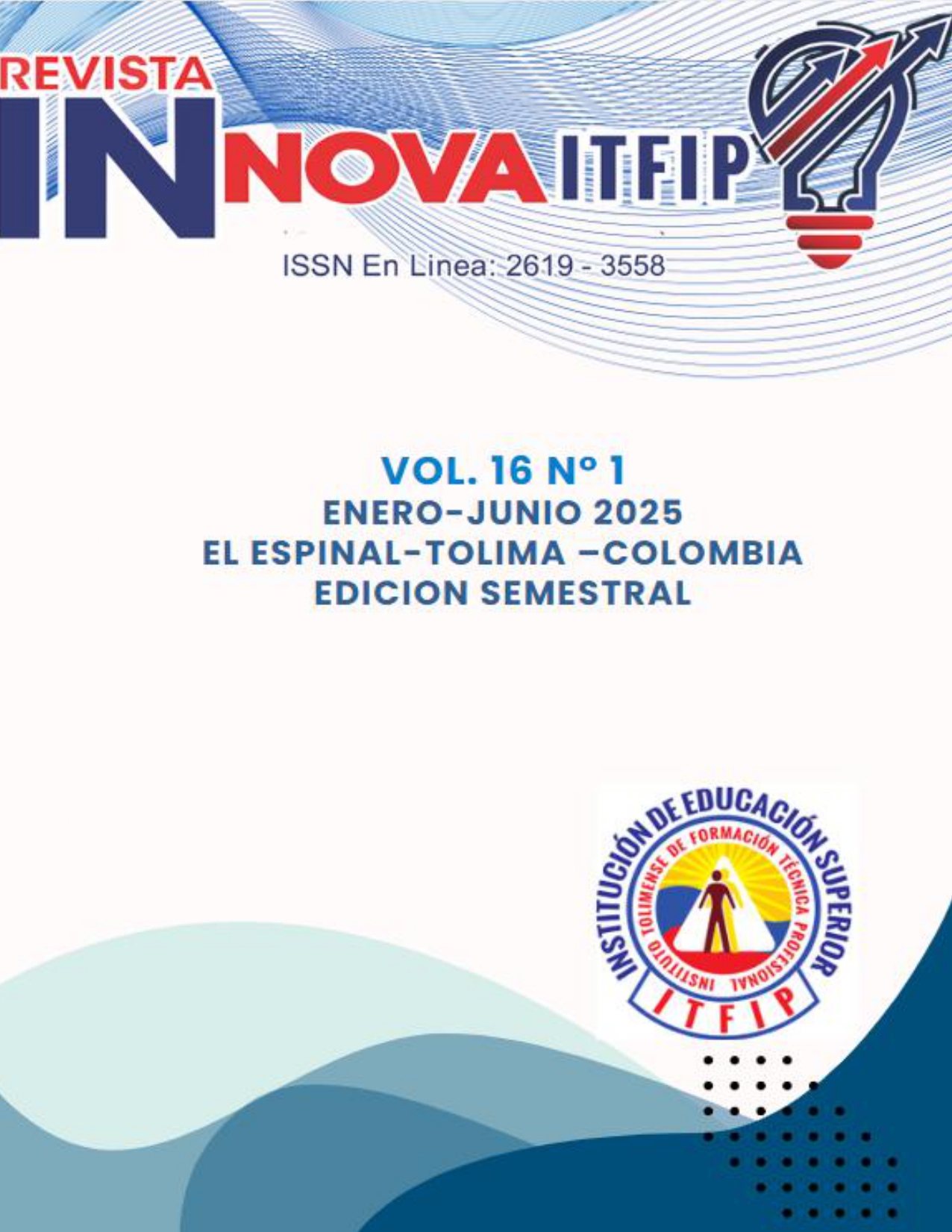Technological foresight as a dynamic capability in research centers. case study
Carla Patricia Bermúdez Peña
Francisco Flores Agüero
DOI: https://doi.org/10.54198/innova16.04
Keywords: Dynamic capabilities, Technological foresight, Dynamic environment, Research centers
Abstract
Currently, organizations must be prepared for the technological changes presented by their environment and anticipate these changes to adjust their technological strategy, this is achieved through technological foresight. The present work aims to analyze how technological foresight can be a dynamic capacity of an organization, specifically a research center. For the present investigation, the electrochemistry area of the Center for Research and Technological Development in Electrochemistry (CIDETEQ) was taken as a case study. Semi-structured interviews were carried out with the main actors in charge of technological foresight. Five characteristics are identified in common between dynamic capabilities and technological foresight. These characteristics are: they are a built and not purchased capacity, they integrate resources, reconfigure resources, gain resources and allow organizations to adapt and create changes in the environment. It is concluded that technological foresight is a dynamic capacity built capable of integrating, reconfiguring and gaining resources that allows it to adapt to the environment of an organization.
Downloads
References
Barney, J. (1991). Firm Resources and Sustained Competitive Advantage. Journal of Management, 17(1). doi:10.1177/014920639101700108
Becker, P. (2002). Corporate Foresight in Europe. Retrieved from http://www.foresight-platform.eu/wp-content/uploads/2011/04/EFMN-Brief-No.-82-Corporate-Foresight-in-Europe.pdf
Blind, K., Cuhls, K., & Grupp, H. (1999). Current Foresight Activities in Central Europe. Technological Forecasting and Social Change, 60(1), 15-35. doi:10.1016/S0040-1625(98)00021-3
Bravo, E., & Herrera, L. (2009, April). Generación de capacidades dinámicas mediante la innovación organizacional: Un múltiple estudio de casos exploratorio. In XIII Congreso de Ingeniería de Organización (pp. 195-205).
Brown, S. L., & Eisenhardt, K. M. (1997). The Art of Continuous Change: Linking Complexity Theory and Time-Paced Evolution in Relentlessly Shifting Organizations. Administrative Science Quarterly, 42(1), 1-34. doi:10.2307/2393807
Drever, E. (1995). Using Semi-Structured Interviews in Small-Scale Research. A Teacher's Guide. Edinburgh.
Edington, D. W. (2001). Emerging research: a view from one research center. American Journal of Health Promotion, 15(5), 341-349.
Eisenhardt, K. M. (1989). Making Fast Decisions in High-Velocity Environments (Vol. 32).
Eisenhardt, K. M., & Martin, J. (2000). Dynamic Capabilities: What are they? Strategic Management Journal, 21(10).
Ende, J. V. D., Mulder, K., Knot, M., Moors, E., & Vergragt, P. (1998). Traditional and Modern Technology Assessment: Toward a Toolkit. Technological Forecasting and Social Change, 58(1-2), 5-21. doi:10.1016/S0040-1625(97)00052-8
Fallon-Byrne, L., & Harney, B. (2017). Microfoundations of dynamic capabilities for innovation: a review and research agenda. The Irish Journal of Management, 36(1), 21-31.
Horton, A. (1999). A simple guide to successful foresight. Foresight, 1(1), 5-9. doi:10.1108/14636689910802052
MacKay, B., & McKiernan, P. (2004). The role of hindsight in foresight: refining strategic reasoning. Futures, 36(2), 161-179. doi:10.1016/S0016-3287(03)00147-2
Martin, B. R. (1995). Foresight in science and technology. Technology Analysis & Strategic Management, 7(2), 139-168. doi:10.1080/09537329508524202
Medina Vásquez, J. E., & Ortegón, E. (2006). Manual de prospectiva y decisión estratégica: bases teóricas e instrumentos para América Latina y el Caribe: Cepal.
Miles, I. (2010). The development of technology foresight: A review. Technological Forecasting & Social Change, 77(9), 1448-1456. doi:10.1016/j.techfore.2010.07.016
Miranda Torrez, J. (2015). El modelo de las capacidades dinámicas en las organizaciones. Investigación administrativa, 44(116), 0-0.
Peña, C., Velázquez, L., Rincón M., y García, R. (2017) Cultura organizacional y la gestión del conocimiento: factores de cambio en una empresa automotriz. Revista Innova ITFIP, 2(1), 15 - 22.
Pineda, L. (2013). PROSPECTIVA ESTRATÉGICA EN LA GESTIÓN DEL CONOCIMIENTO: UNA PROPUESTA PARA LOS GRUPOS DE INVESTIGACIÓN COLOMBIANOS. Investigación y Desarrollo, 21, 237-311.
Reger, G. (2001). Technology Foresight in Companies: From an Indicator to a Network and Process Perspective. Technology Analysis & Strategic Management, 13(4), 533-553. doi:10.1080/09537320127286
Rohrbeck, R. (2010). Corporate Foresight: Towards a Maturity Model for the Future Orientation of a Firm. Berlín: Springer-Verlag.
Schwarz, J. O., Rohrbeck, R., & Wach, B. (2019). Corporate foresight as a microfoundation of dynamic capabilities. FUTURES & FORESIGHT SCIENCE, e28.
Slaughter, R. A. (1998). Futures Studies as an Intellectual and Applied Discipline. Futures Studies as an Intellectual and Applied Discipline, 42(3), 372-385. doi:10.1177/0002764298042003008
Teece, D. J. (2007). EXPLICATING DYNAMIC CAPABILITIES: THE NATURE AND MICROFOUNDATIONS OF (SUSTAINABLE) ENTERPRISE PERFORMANCE. Strategic Management Journal, 28(1), 1319-1350. doi:10.1002/smj.640
Teece, D. J. (2017). Business models and dynamic capabilities. Long Range Planning. doi:https://doi.org/10.1016/j.lrp.2017.06.007
Teece, D. J., Pisano, G., & Shuen, A. (1997). Dynamic Capabilities and Strategic Management. Strategic Management Journal, 18(7), 509-533.
Torres, E. y Pérez, L. (2017) Fac tores que inciden en la productividad investigativa. Revista INNOVA ITFIP, 1 (1), 105 - 111.
Wernerfelt, B. (1984). A resource-based view of the firm. Strategic Management Journal, 5(2), 171-180. doi:10.1002/smj.4250050207
Will, M. (2008). Talking about the future within an SME?: Corporate foresight and the potential contributions to sustainable development. Management of Environmental Quality: An International Journal, 19(2), 234-242. doi:doi.org/10.1108/14777830810856618
Zollo, M., & Winter, S. G. (2002). Deliberate Learning and the Evolution of Dynamic Capabilities. Organization Science, 13(3), 339-351. doi:10.1287/orsc.13.3.339.2780





